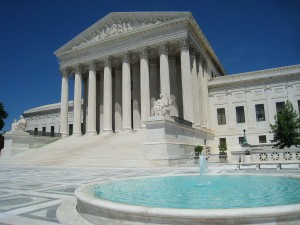Top Federal Appeal Lawyers: Specialist Legal Support for Your Federal Appeal
Demystifying the Process of Federal Appeals: What You Need to Know
Navigating the complex world of government allures can frequently appear like passing through undiscovered waters for those strange with the procedure. Understanding the nuances of appellate court jurisdiction, the complexities of filing a notice of charm, providing an engaging short, and making a convincing dental debate are essential parts that can dramatically influence the end result of an instance. By unraveling the layers of intricacy bordering government allures, people can get a more clear insight into the mechanisms that govern this critical point of the legal system.
Understanding Federal Appeals Refine
Diving right into the complex realm of the government allures process introduces a systematic and organized trip with the judicial system. Federal charms serve as an essential mechanism for reviewing choices made by reduced courts. Comprehending this process is essential for any person associated with legal proceedings at the government degree.
The process typically starts with a celebration dissatisfied with a reduced court's judgment filing a notification of charm. This sets off a testimonial by a greater court, where a panel of judges analyzes the lawful arguments offered by both celebrations. Briefs outlining the lawful reasoning behind each event's setting are submitted, and dental arguments might be heard to clear up intricate problems.
The appellate court's decision is based on a thorough examination of the reduced court's process and the disagreements provided. Once the appellate court reaches a choice, it can attest, reverse, remand, or modify the reduced court's judgment, supplying clearness and finality to the legal disagreement.
Appellate Court Territory Described
As we advance from understanding the government allures process to dissecting the details of appellate court territory, a fundamental facet emerges concerning the authority and limits of these greater courts in the legal landscape. Appellate court territory refers to the scope of instances that a specific appellate court has the power to make a decision and evaluate upon. Unlike high court that hear instances for the very first time, appellate courts are limited to assessing decisions made by reduced courts. These decisions can consist of judgments from both state and federal courts.
Appellate courts have territory over particular sorts of cases, commonly those involving lawful errors, procedural concerns, or questions of legislation instead than factual conflicts. The territory of appellate courts is typically laid out in statutes and legislations that control the court system. Understanding appellate court jurisdiction is critical for parties included in the allures process as it identifies whether an instance is qualified for review and the degree to which the appellate court can interfere in the reduced court's decision.
Filing a Notice of Charm
The first action in commencing the federal charms procedure entails filing a Notice of Charm with the ideal appellate court. This essential paper officially notifies the court and the other parties associated with the situation that the appealing event plans to look for a review of the lower court's decision. Filing a Notice of Charm is a stringent procedural demand that establishes the appellate procedure moving.
When preparing the Notification of Charm, it is crucial to ensure compliance with the particular guidelines and guidelines of the relevant appellate court. federal crime attorney. The record should generally include details such as the case name, the reduced court's name, the date of the judgment being appealed, and a succinct statement suggesting the grounds for the allure

Rundown and Dental Argument
In the appellate procedure, presenting composed briefs and participating in oral debates play critical duties in advocating for the appealing celebration's placement before the appellate court. Briefs are detailed lawful files that detail the parties' disagreements, lawful authorities, and evaluation supporting their settings. These created submissions supply the court with a thorough understanding of the facts of the situation, the pertinent law, and why the appealing party thinks the reduced court's choice should be reversed.
Adhering to the entry and review of the briefs, oral disagreements use the events an opportunity to further clarify their settings, attend to any kind of questions the appellate judges may have, and highlight bottom lines from their created briefs. Oral disagreements are a possibility for the lawyers to encourage the courts via verbal advocacy and reactions to queries from the bench.
Both the composed briefs and dental arguments are important elements of the appellate process, enabling celebrations to present their case thoroughly and compellingly before the appellate court. - federal crime lawyer
Getting the Appellate Court Decision
The appellate court's choice is generally supplied in a written style and lays out the court's final thoughts on the lawful issues provided, the thinking behind their choice, and the judgment made. The time structure for receiving the appellate court's decision can differ, but courts aim to supply prompt resolutions. Whether the appellate court affirms, turns around, or remands the reduced court's choice, understanding the ramifications of the judgment is important for all events entailed in the appellate process.
Final Thought
In verdict, the government appeals process is a complicated yet crucial action in seeking justice. Comprehending the appellate court territory, submitting a notice of appeal, preparing briefs, and providing dental debates are all essential components of this process. Ultimately, getting the appellate court decision can supply clearness and resolution to lawful disagreements. It is necessary to navigate the federal appeals process with diligence and interest to detail to accomplish a fair outcome.
As we advance from comprehending the federal appeals process to studying the intricacies of appellate court territory, a basic element comes to light relating to the authority and limitations of these higher courts in the lawful landscape. Appellate court territory refers to the range of situations that a particular appellate court has the power to determine and examine upon. Unlike trial courts that hear webpage instances for the very first time, appellate courts are limited to reviewing choices made by reduced courts. Understanding appellate court territory is critical for events included in the appeals procedure as it identifies whether a case is qualified for evaluation and the level to which the appellate court can interfere in the lower court's choice.
